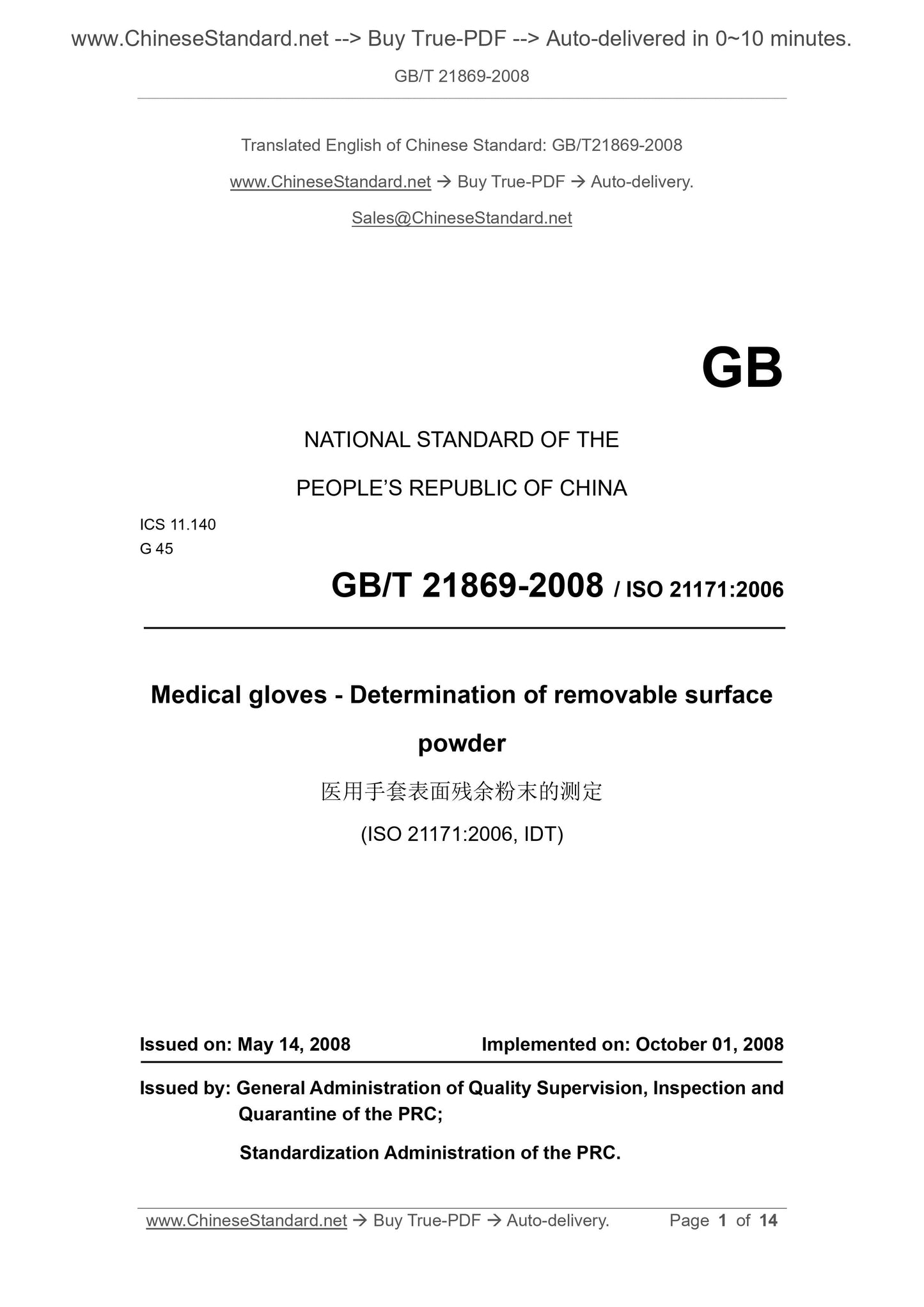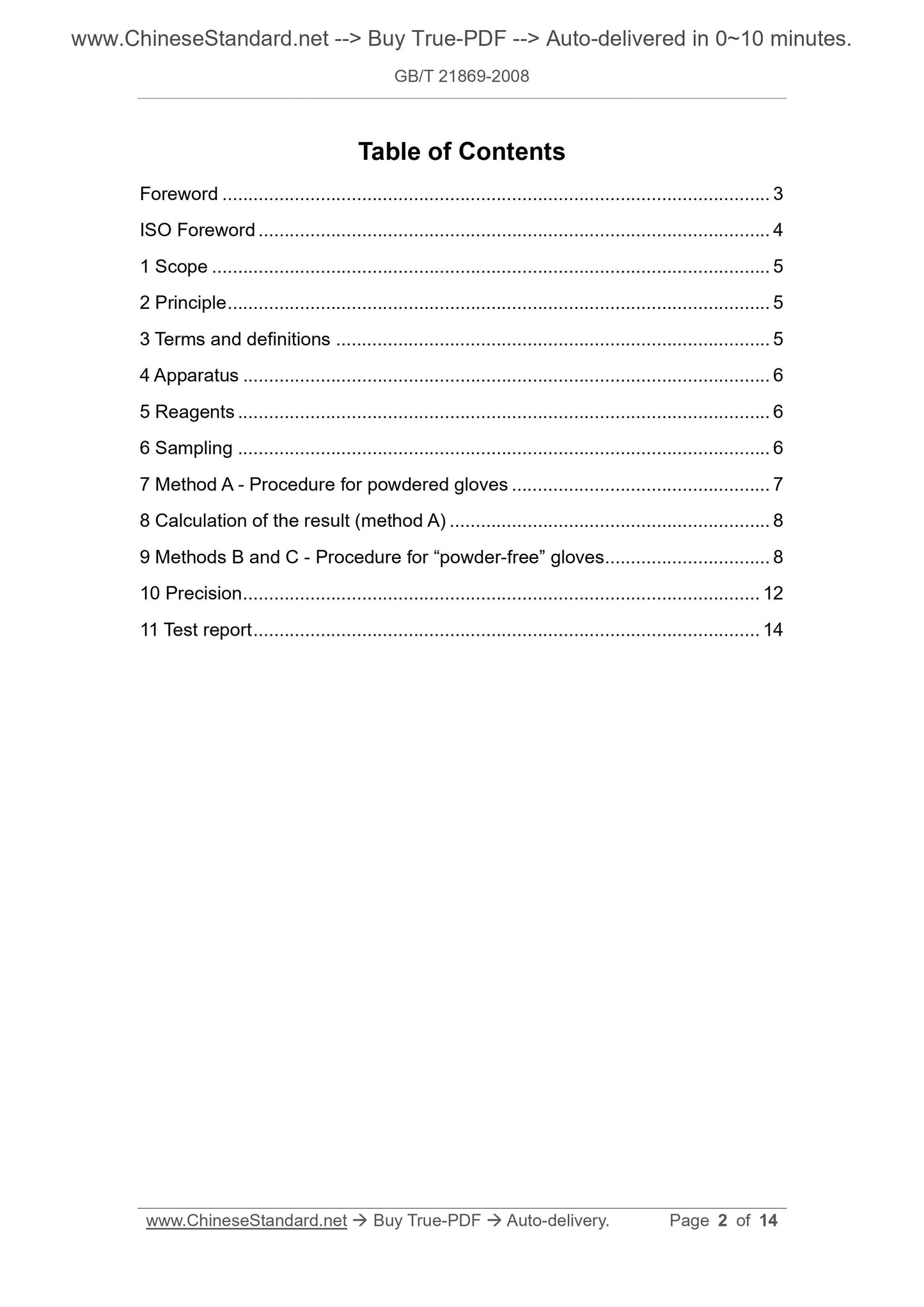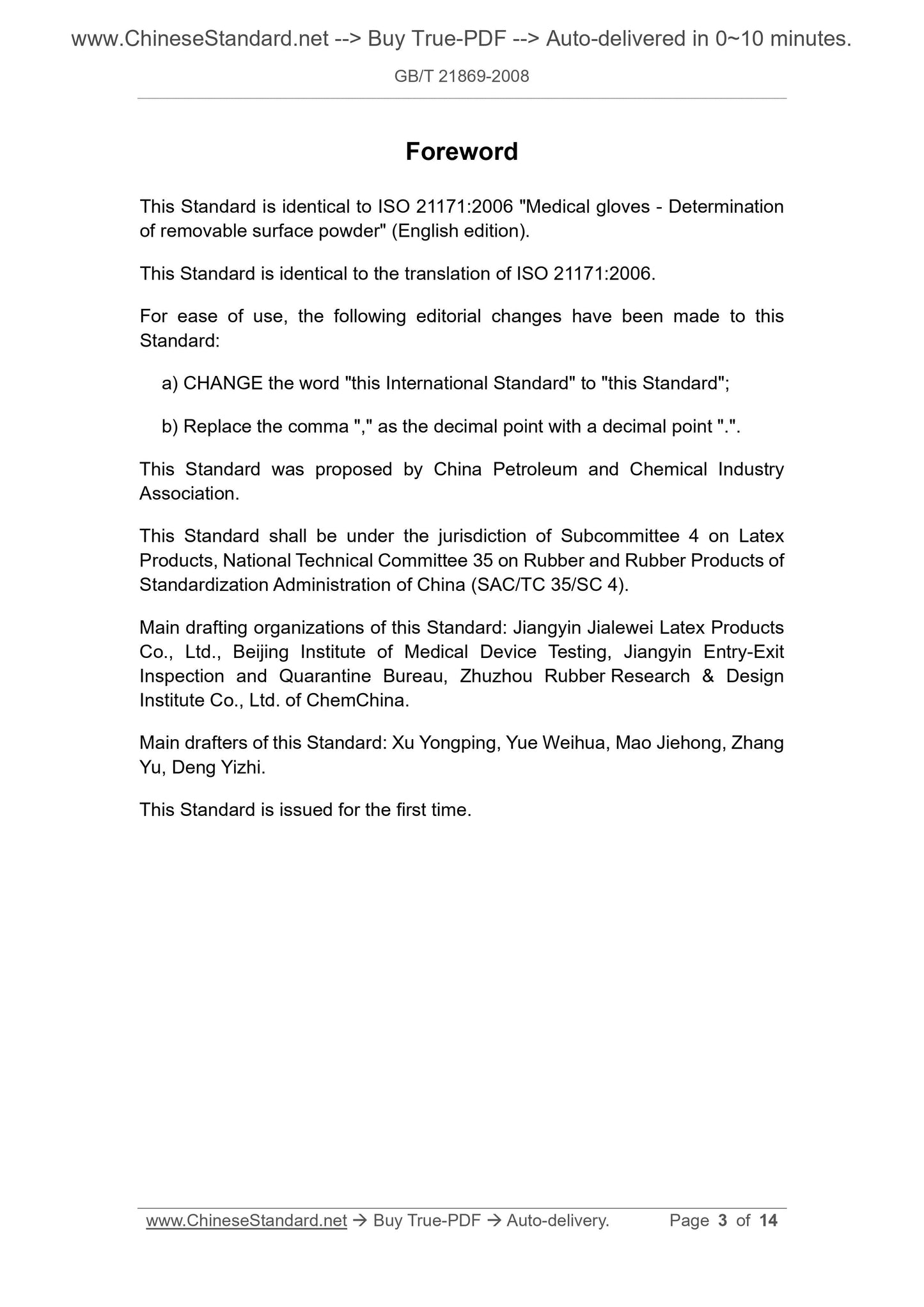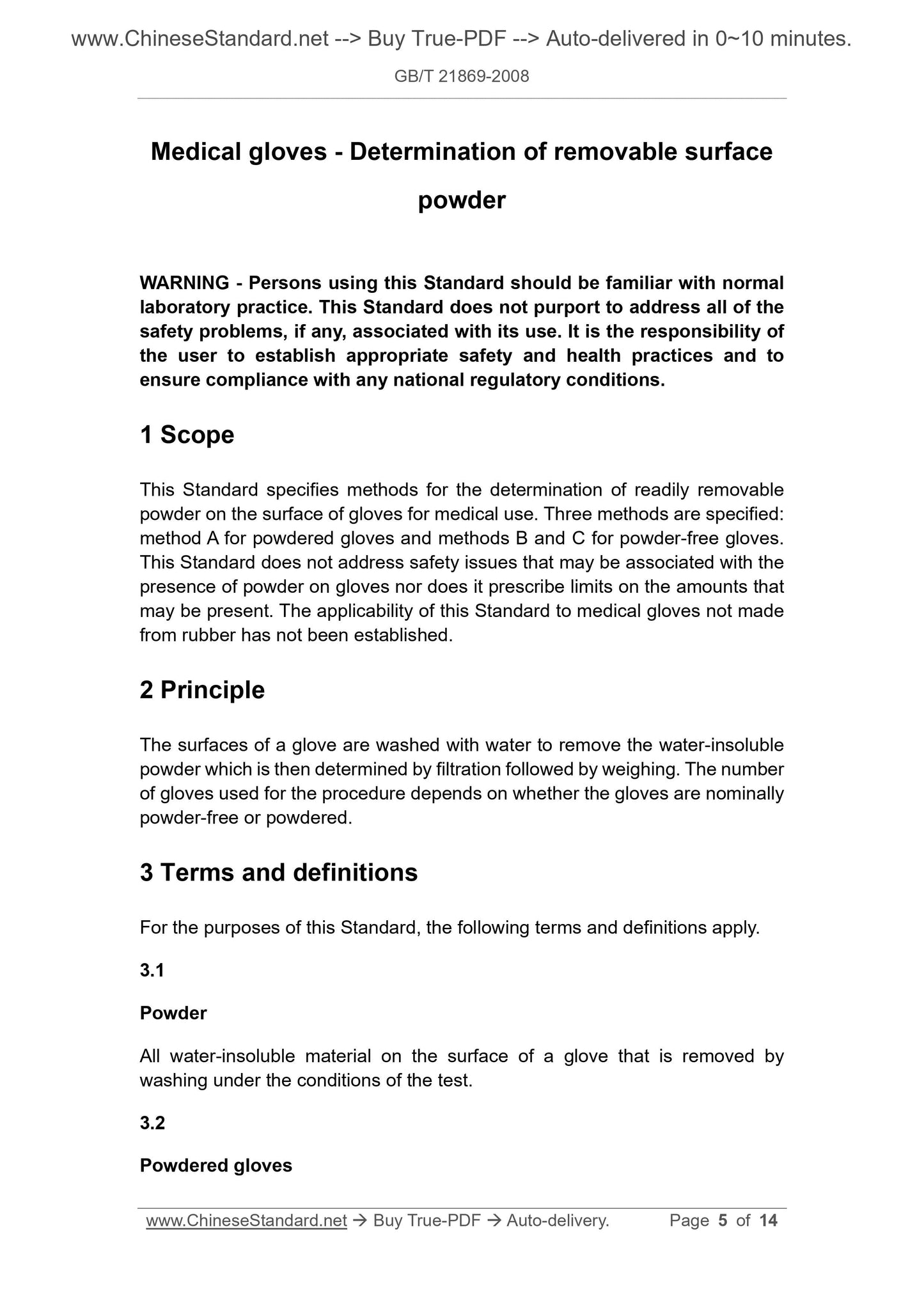1
/
of
4
www.ChineseStandard.us -- Field Test Asia Pte. Ltd.
GB/T 21869-2008 English PDF (GB/T21869-2008)
GB/T 21869-2008 English PDF (GB/T21869-2008)
Regular price
$110.00
Regular price
Sale price
$110.00
Unit price
/
per
Shipping calculated at checkout.
Couldn't load pickup availability
GB/T 21869-2008: Medical gloves -- Determination of removable surface powder
Delivery: 9 seconds. Download (and Email) true-PDF + Invoice.Get Quotation: Click GB/T 21869-2008 (Self-service in 1-minute)
Newer / historical versions: GB/T 21869-2008
Preview True-PDF
Scope
This standard specifies the determination method for the easily removable powder content on the surface of medical rubber gloves. Method A applies to "powdered" gloves, method BAnd method C applies to "powder-free" gloves. This standard does not involve safety issues related to the powder on the surface of the glove, nor does it specify the residual surface of the glove
I powder limit. Medical gloves not made of rubber are not applicable to this standard.
Basic Data
| Standard ID | GB/T 21869-2008 (GB/T21869-2008) |
| Description (Translated English) | Medical gloves -- Determination of removable surface powder |
| Sector / Industry | National Standard (Recommended) |
| Classification of Chinese Standard | G45 |
| Classification of International Standard | 11.140 |
| Word Count Estimation | 9,985 |
| Date of Issue | 2008-05-14 |
| Date of Implementation | 2008-10-01 |
| Adopted Standard | ISO 21171-2006, IDT |
| Regulation (derived from) | National Standard Approval Announcement 2008 No.8 (Total No.121) |
| Issuing agency(ies) | General Administration of Quality Supervision, Inspection and Quarantine of the People's Republic of China, Standardization Administration of the People's Republic of China |
| Summary | This standard specifies the medical rubber gloves, powder surface is easy to remove the determination of the content. A suitable method " has pink " gloves, Method B and Method C applies to the "no pink " gloves. This standard does not involve surface associated with glove powder safety issues, nor limit the provisions of the glove surface powder. Non- medical rubber glove does not apply to this standard. |
Share







